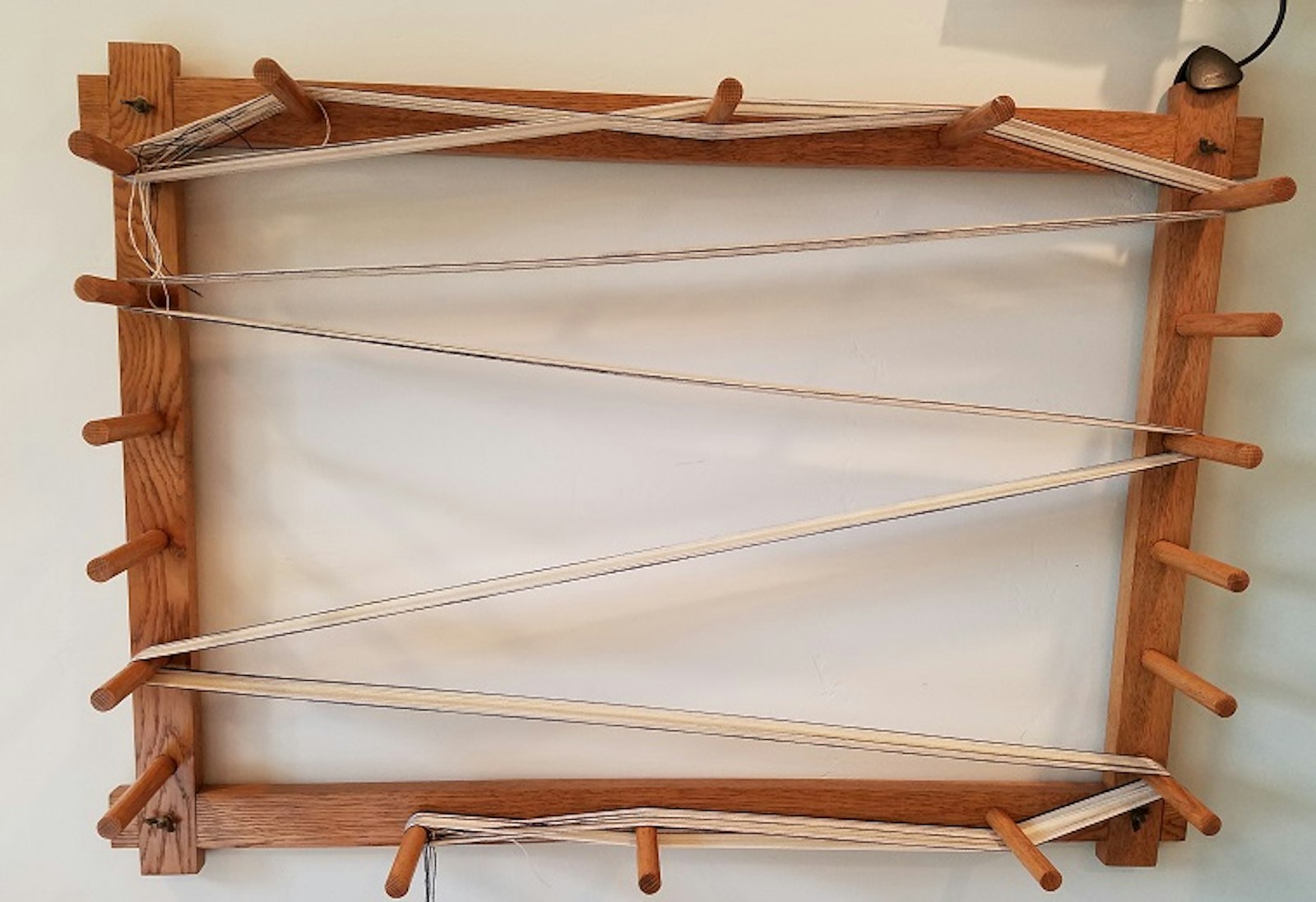I have a confession to make. Though I have been warping and weaving for almost five years it’s only in this past year that I’ve started using both a sleying hook and threading hook when I warp. When I warped my very first “real” project on the loom I tried using both of these tools while warping the loom and rejected them as clunky and unnecessary. They got in my way as I was trying to handle the threads and I would frequently drop them on the floor. I was unfamiliar enough with weaving—adding in other items to manipulate and keep track of was just too much.
For the next few years I placed every thread in the reed and each heddle by hand. I kept them for weaving on the rigid-heddle loom—they really did seem to help there—and that was that. Well, at least until I was warping a wide project at a sett that required me to use two threads per dent. While I was carefully picking up one thread at a time and slid each one through the reed, I spied the much-neglected sleying hook on my shelf. I wondered if I could use the hook to sley two threads at a time and decided to give it a second chance. The speed at which I warped the loom was an absolute revelation. Since that time I have always used a sleying hook, and have even purchased a spare so if I drop or lose one, I have the other on the shelf beside my loom.

Christina's new old favorite warping tool
More recently, as I was warping up some dish towels, my husband asked me why I didn’t use my threading hook while warping. Thinking back to my experience with sleying, I decided to do a few threads with the threading hook to see if it made a difference. Once again the tool I had once found cumbersome was now an asset.
Suddenly I had an epiphany: When I first started weaving, it wasn’t that the tools themselves were bad, or that they were unnecessary bits of equipment, it was that I didn’t know how to use them properly. It was a bit like when I first tried using a good kitchen knife for the first time: I didn’t know how to use it correctly and it was difficult to handle. Eventually I learned how to rock the knife with one hand and move the food with the other and could chop easily and efficiently. The same thing happened when I first tried to use those hooks.
I was completely new to the process of warping a floor loom, and just about every bit of my brain was focused on keeping the threads straight and making sure the right heddles were threaded in the right order. Because I was uncomfortable with warping I was uncomfortable with the specialized warping tools. Now, though, I have the muscle memory when warping, as I instinctively place each thread and balance the cross in one hand and my sleying hook in the other.
As I advance in my weaving, I’m learning so much I didn’t know I needed to know. Each new lesson helps me to become a better, more efficient weaver. And it’s not just the process of weaving that’s helping me; it’s also learning about and better understanding the weave structures themselves. When you better understand why a weave behaves a certain way or how it creates the patterns it does, your weaving will improve.
Happy Weaving! —Christina
Originally published on December 16, 2015

